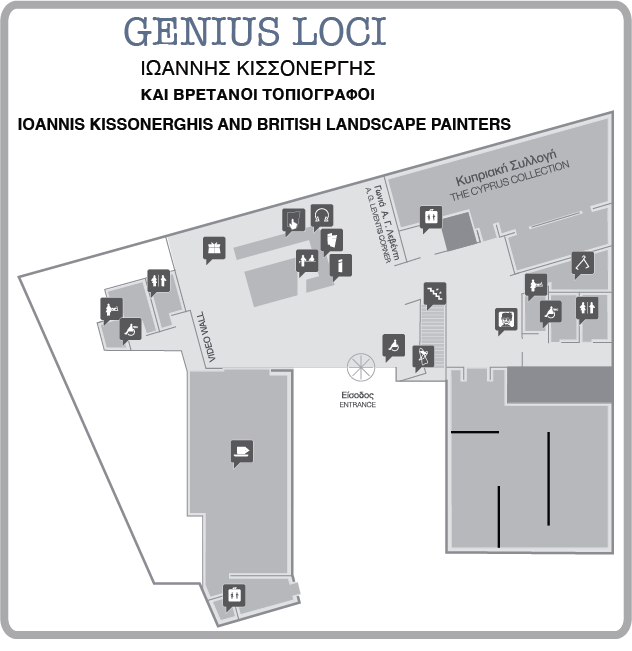
The Paris Collection
Anastasios G. Leventis gathered what is today the A. G. Leventis Foundation's Collection of European Art, known as 'the Paris Collection', in the 1950s, 1960s and early 1970s. In his Paris home, he brought together works from a broad spectrum of the history of art which reflect his personal fascination with different artistic schools and styles, from the Old Masters and academic art to Impressionism and the early days of Modernism, amidst period furniture and a wealth of objects from the decorative arts. The collection's outstanding paintings, watercolours, prints and drawings date mostly from the 17th century to the 20th and offer a glimpse of the high points of Western painting, including religious art of the Counter-Reformation, scrupulously painted Dutch still lifes, light-spirited Rococo pastorals, 18th-century Venetian views, works by the precursors and the great masters of the Impressionist movement, and boldly coloured Pointillist and Fauve canvases. A focus on Old Master painting is illustrated through works by leading exponents of the Spanish, French, Italian and British Schools, represented respectively by artists of the calibre of El Greco, Murillo, Arellano, Boucher, Fragonard, Oudry, Canaletto, Guardi and Gainsborough. These are followed by masterworks of Impressionist and Post-Impressionist art, introduced through the work of forerunners such as Corot and Boudin and exemplified through the bold brushwork of Monet, Renoir, Sisley, Pissarro, Signac, Dufy, Bonnard and Chagall. Largely unseen and unpublished until 2012 — when more than 70 selected works were presented in a joint exhibition of the Foundation's three Collections at the National Gallery in Athens — the Paris Collection has been extensively researched with the contribution of leading museum curators and academics from around the world. Through what has been a fascinating journey of (re)discovery, its significant works emerge as major additions to existing scholarship. In the new, purpose-built A. G. Leventis Gallery, the Collection is exhibited as a community treasure, open to researchers and the public alike. Within the Gallery, the interactive, state-of-the-art display celebrates the collector's eclectic outlook by featuring Louis XV and Louis XVI furniture, Chinese porcelain, delicate Meissen and Sèvres wares, and a wealth of other objets d'art - from biscuit figurines to period clocks, miniatures and small-scale sculptures. Paying homage to the once private nature of the Collection, the presentation also reflects something of its original setting: the elegant wood-panelled room from the collector's apartment was transported and rebuilt in the Gallery, enriching the viewing experience and evoking the ambiance of the residence that overlooked the tree-lined Paris boulevards and the Eiffel Tower.
The Greek Collection
The nucleus of this significant collection of works by 19th- and 20th-century Greek artists is made up of the oil paintings, watercolours, drawings and prints acquired by Anastasios G. Leventis in 1973 from Evangelos Averoff-Tossizza. The first catalogue, published in 1989, featured 190 works. Enriched with further acquisitions in the 1990s and 2000s, the Greek Collection today numbers more than 260 works, from the aftermath of the Greek War of Independence in 1821 to around 1970. The first gallery of the Greek Collection — 'From the 19th Century to the 20th' — features works which represent the variety of artistic movements and stylistic approaches in the history of Modern Greek painting, including exemplary works by the artists who shaped the face of Greek art in the 19th century. On show are characteristic portraits of members of society in independent Greece, representative works by artists of the School of Munich, innovative compositions by Pericles Pantazis, landscapes and seascapes, and works by artists illustrating the passage to the 20th century. The second gallery of the Greek Collection is dedicated to 'The 20th Century' and features works by the great masters Konstantinos Parthenis, Konstantinos Maleas and Spyros Papaloukas, as well as the eminent younger artists who left their mark on 20th-century Greek painting such as Yannis Tsarouchis, Nikos Hatzikyriakos-Ghika and Yannis Moralis. Together they offer an overview of Greek art of the period: from Modernist explorations to academic expressions, the achievements of the Generation of the '30s and post-war painting, up to Abstract art.
The Cyprus Collection
It was only quite recently that the A. G. Leventis Foundation began to collect Cypriot art, with the Board of Trustees deciding that the primary focus should be on the first generation of Cypriot artists, as well as some pieces by artists of the second generation who explored similar themes. Featuring representative pieces by Cypriot artists born between 1884 and 1930, the Collection offers insight into the beginnings and development of modern Cypriot art. The pioneers of contemporary Cypriot art worked under adverse conditions. Yet, despite problems in creating their work and gaining public acceptance, they laid the foundations for Cypriot art to develop and flourish. Most of these artists were also fortunate enough to experience the birth of the Republic of Cyprus, as well as the subsequent establishment of numerous institutions that supported local art. Their works are often of a narrative and figurative character, as the artists found their inspiration in the everyday life of the people, the landscape and the history of Cyprus. They were influenced by their education abroad at various fine art academies, where they were exposed to Post-Impressionism and to other contemporaneous Modernist movements. Some Cypriot artists also experimented with the ancient, Byzantine and folk art of Cyprus, traditions which prevailed on the island at the time, as Cyprus, subject to foreign rule up until the mid-20th century, had not been exposed to the artistic Renaissance experienced in Western Europe. At the heart of the Collection is The World of Cyprus, the monumental work by Adamantios Diamantis that was in Greece from 1976 and was finally returned in 2014 to the island on long-term loan from the Teloglion Foundation of Art, Thessaloniki. This large-scale composition (1.75 x 17.5 m) is based on 75 drawings depicting the people and landscapes of the island, which the artist drew between 1931 and 1959. Created on Cyprus between 1967 and 1972, it portrays the traditional world of the island and its people, a world which the painter described as 'bearing the long heritage of Cyprus'. Together with the Collection's other works, it captures the spirit of the past, enriching our knowledge and understanding of Cyprus and its people. The display of the Cyprus Collection concludes with an abstract composition by Christoforos Savva, a work that heralds the dawn of a new era in modern Cypriot art.
360° Virtual Tour by © Lemonimage.com
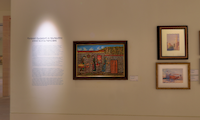
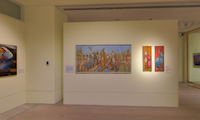
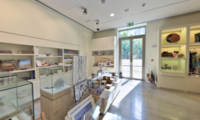
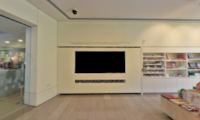


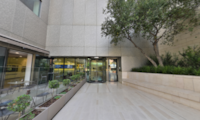
Visit us @ leventisgallery.org